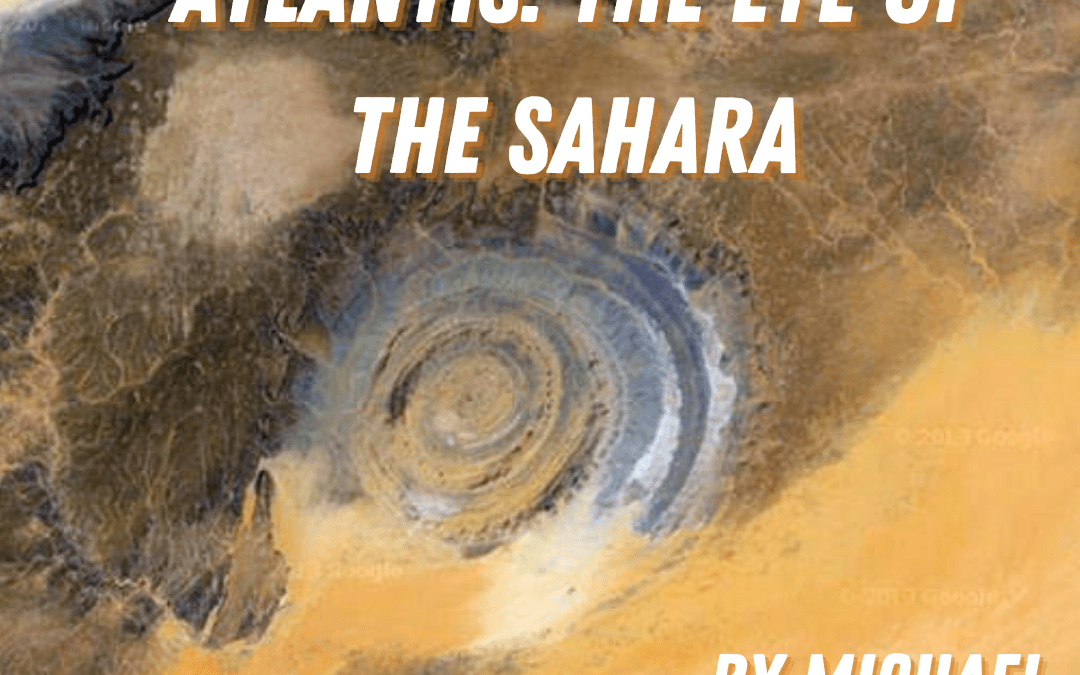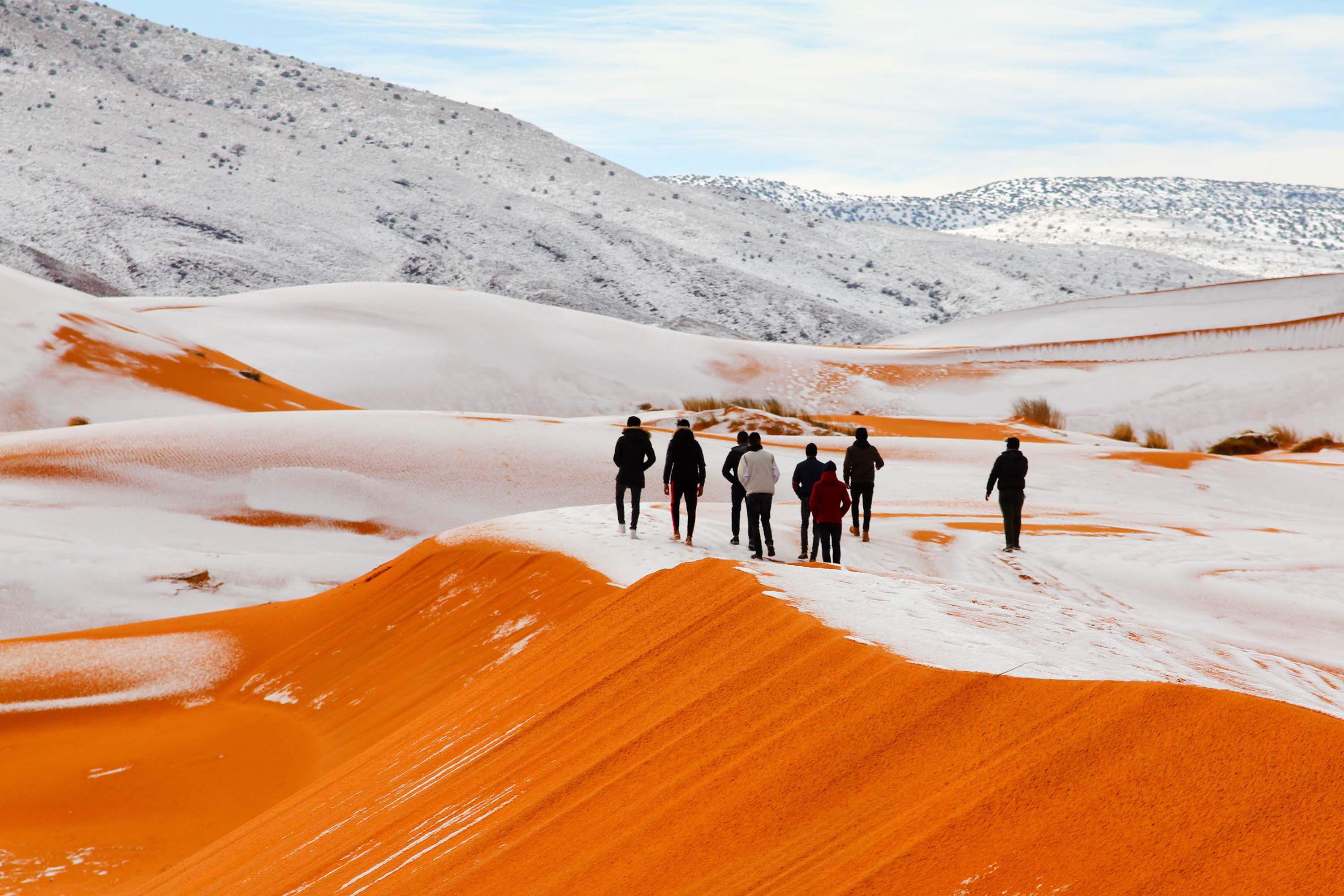Topic fun facts about the sahara desert: Discover the Sahara Desert"s captivating secrets in our exploration of its vibrant history, unique wildlife, and astonishing natural phenomena. Unearth a world beyond the dunes in these intriguing Sahara facts.
Table of Content
- What are some fun facts about the Sahara Desert?
- Uncovering the Sahara"s Green Past
- Sahara"s Wildlife: More Than Just Camels
- Rain in the Sahara: A Rare Phenomenon
- The Great Sahara: Size and Scope
- Life in Extreme Conditions: Survival Adaptations
- Historical Mysteries: The Sahara Through Ages
- YOUTUBE: Incredible Facts: The Sahara Desert
- Challenges and Opportunities: Human Life in the Sahara
- Climate and Weather Patterns of the Sahara
- Unique Phenomena: Singing Sand Dunes
- Conservation Efforts: Protecting the Desert"s Fragile Ecosystem
What are some fun facts about the Sahara Desert?
There are several fun facts about the Sahara Desert:
- The Sahara is often mistaken as the world\'s largest desert when it is actually the largest hot desert.
- It covers an area of more than 9 million square kilometers, making it roughly the size of the United States.
- Despite being a desert, the Sahara is not entirely devoid of life. It\'s home to several animal species including desert ants that can tolerate extreme temperatures.
- The surface temperature in the Sahara can reach up to 60 °C (140 °F) or higher for short periods.
These interesting facts about the Sahara Desert highlight its vast size, unique wildlife, and extreme climatic conditions.
READ MORE:
Uncovering the Sahara"s Green Past
The Sahara Desert, often perceived as a vast, lifeless expanse of sand, hides a green past beneath its golden dunes. Thousands of years ago, this now-arid region was a lush, vibrant ecosystem brimming with life.
- Historical Evidence: Climate models and archaeological findings indicate that the Sahara was once a verdant landscape, teeming with rivers, lakes, and abundant wildlife.
- Orbital Precession: Changes in Earth’s orbit brought about wet periods in the Sahara every 20,000 years or so, transforming the desert into a habitable region.
- Ancient Mega-Lakes: Remnants of ancient lakes, discovered through satellite imagery and geological surveys, reveal a Sahara that once supported a variety of flora and fauna.
- Human Impact: Archaeological evidence suggests that human settlement and livestock grazing contributed to the desertification of the Sahara.
- Desert Greening: The Sahara’s green past raises the intriguing possibility of reversing desertification, potentially through large-scale environmental projects.
Understanding the Sahara"s green past not only unravels historical mysteries but also offers insights into climate dynamics and future ecological possibilities.
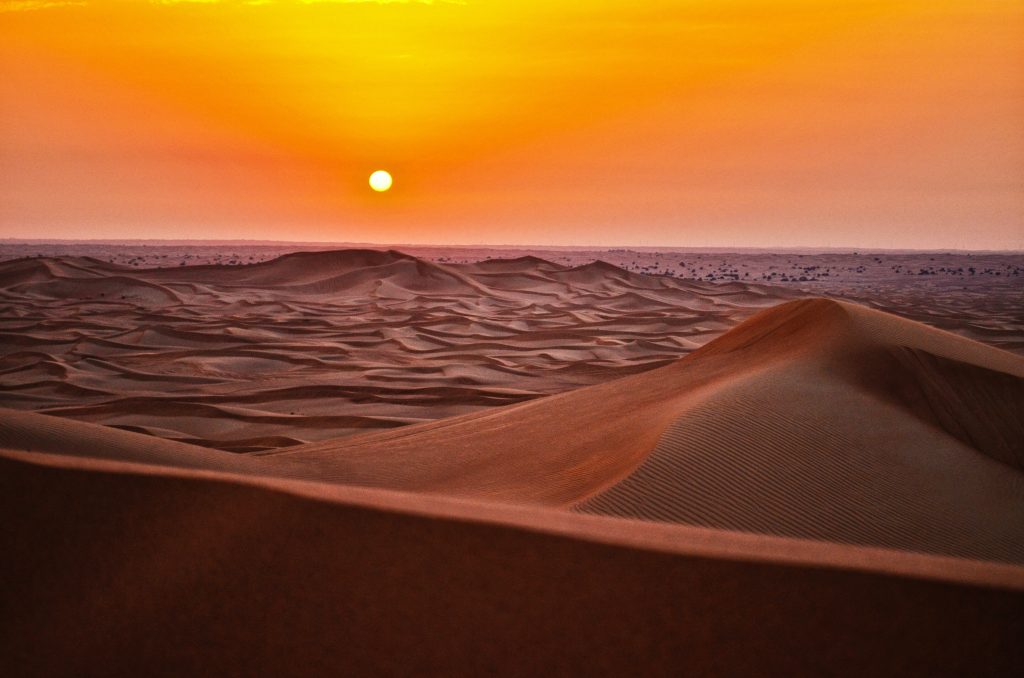
Sahara"s Wildlife: More Than Just Camels
Contrary to common belief, the Sahara Desert teems with a variety of wildlife, each species uniquely adapted to thrive in one of Earth"s most challenging environments.
- Resilient Mammals: The Sahara hosts creatures like the addax, a critically endangered white antelope, and various species of gazelles. The fennec fox, known for its distinctive large ears, and the Saharan cheetah, a rare subspecies, are also notable inhabitants.
- Diverse Reptilian Life: The desert monitor lizard and snakes such as the horned viper and the Sahara sand viper represent the reptilian fauna.
- Avian Species: Birds like the Namaqua dove and ostrich are part of the Sahara"s ecosystem.
- Unique Adaptations: Many of these animals are nocturnal, venturing out during cooler nights. Their adaptations include specialized kidneys in hedgehogs for conserving water and oversized ears in fennec foxes for heat dissipation.
- Insect Diversity: The Sahara is home to various insects like beetles and ants, each evolved to survive the extreme conditions.
- Human Interaction: Approximately 2.5 million people live in the Sahara, with a mix of nomadic and settled lifestyles, often near water sources.
This rich biodiversity showcases the Sahara as a living desert, defying the harsh climate to sustain a range of life forms.
Rain in the Sahara: A Rare Phenomenon
Rainfall in the Sahara Desert is an extraordinary event, making it one of the driest regions on Earth. Despite its arid climate, the Sahara does experience occasional rain, creating a spectacle of nature that transforms the desert landscape.
- Scarcity of Rain: The Sahara generally receives less than 3 inches (76 millimeters) of rain annually, with some areas seeing even less.
- Seasonal Variations: Most of the scarce rainfall occurs between December and March, with another peak in August characterized by thunderstorms.
- Flash Floods: When it does rain, the downpours can be intense and short-lived, leading to sudden and dramatic flash floods in certain areas.
- Rain"s Impact on Ecosystem: These rare rain events are crucial for sustaining the limited but resilient plant and animal life in the Sahara.
- Historical Green Sahara: Studies suggest that thousands of years ago, the Sahara experienced wetter periods, supporting a much greener and fertile landscape.
- Climate Change Effects: Current research is focused on understanding how climate change may impact the Sahara"s rainfall patterns and overall climate.
The infrequent rains in the Sahara, while scarce, play a vital role in maintaining the delicate balance of this unique ecosystem and continue to be a subject of scientific fascination.
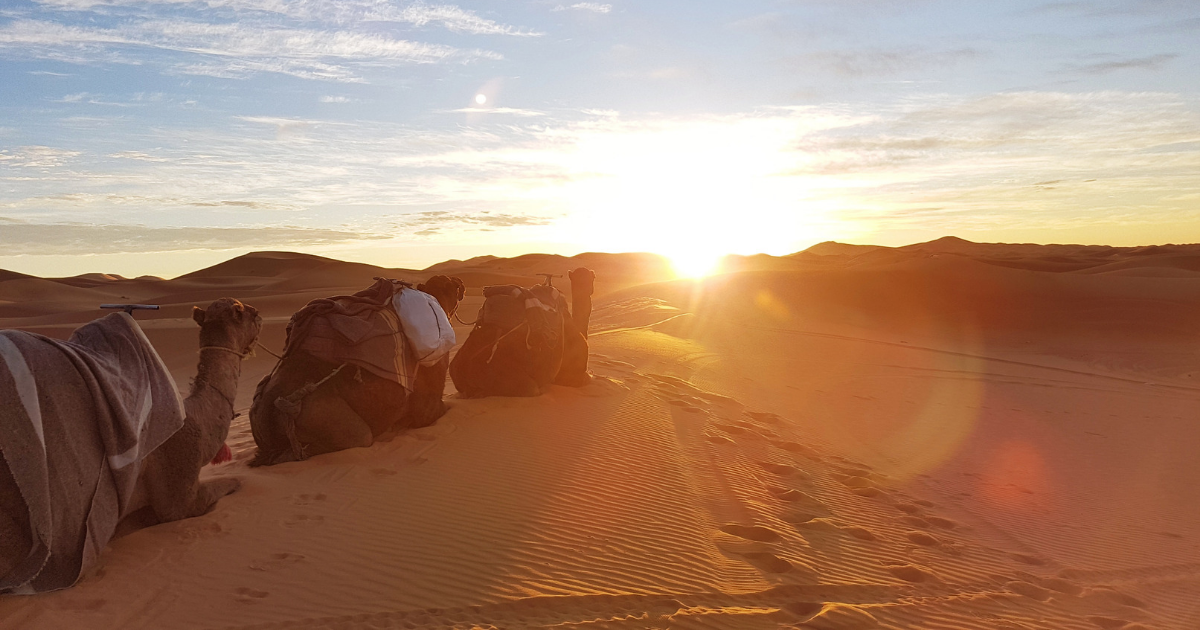
The Great Sahara: Size and Scope
The Sahara Desert is a vast and awe-inspiring landscape that holds the title of the world"s largest hot desert. Its immense size and diverse geography are a testament to the planet"s natural wonders.
- Enormous Expanse: Covering approximately 9.2 million square kilometers, the Sahara spans across North Africa, touching 11 countries.
- Geographical Diversity: Contrary to popular belief, the Sahara is not just a sea of sand dunes. It also includes rocky hamadas, mountain ranges, gravel plains, and salt flats.
- Height Variations: The desert"s topography is varied, with its highest point at the Emi Koussi volcano in Chad, standing at 3,415 meters.
- Climate Extremes: The Sahara is known for its extreme temperatures, ranging from scorching daytime heat to freezing nighttime conditions.
- Sand Dunes and Beyond: While iconic, the vast dunes, or ergs, form only a part of the desert"s landscape. Much of the Sahara consists of rock and gravel.
- Human Adaptation: Despite its harsh conditions, the Sahara is home to over 2.5 million people who have adapted to its environment over millennia.
This magnificent desert continues to captivate and challenge explorers, scientists, and adventurers, making it a subject of endless fascination and study.
Life in Extreme Conditions: Survival Adaptations
The Sahara Desert, characterized by its extreme conditions, is home to flora, fauna, and human communities that have ingeniously adapted to thrive in this challenging environment.
- Flora Adaptations: Desert plants such as cacti and date palms have evolved to store water, reduce water loss, and maximize water uptake. Their deep root systems and ability to open stomata at night minimize water loss.
- Fauna Adaptations: Animals like the fennec fox have large ears for heat dissipation, while camels store fat in their humps as a water and energy reserve. Many Sahara animals are nocturnal, reducing the need for water and avoiding daytime heat.
- Human Survival Techniques: The Sahara"s inhabitants, including the Tuareg and Berber tribes, have adapted traditional lifestyles to the desert environment. They use knowledge of oases, nomadic herding, and trade routes for survival.
- Architectural Adaptations: Traditional Saharan architecture utilizes materials and designs that keep buildings cool, such as thick mud walls and narrow streets to shade and reduce heat absorption.
- Water Conservation: Ingenious methods of water conservation and irrigation, like fog nets and underground canals (qanats), are used to sustain agriculture and life.
These adaptations demonstrate the resilience and ingenuity of life in one of the most extreme environments on Earth, the Sahara Desert.

Historical Mysteries: The Sahara Through Ages
The Sahara Desert, with its vast and ancient landscape, is steeped in history and mystery. This section explores the rich historical tapestry of the Sahara, from its prehistoric climate shifts to the rise and fall of early civilizations.
- Prehistoric Climate Shifts: The Sahara was not always a desert. Geological and climatic evidence suggests it has undergone several transformations from lush greenery to arid desert over millennia.
- Ancient Human Settlements: Archaeological findings reveal that the Sahara was once home to early human civilizations, with rock art and ruins indicating a rich cultural history.
- Trade and Caravans: The Sahara played a crucial role in ancient trade routes, with camel caravans traversing the desert, carrying goods like gold, salt, and spices between Africa and Eurasia.
- Mythical Cities and Legends: The desert is riddled with legends of lost cities and civilizations, like the fabled Atlantis of the Sands, believed to have been swallowed by the desert.
- Adaptation and Survival: The historical adaptation of flora, fauna, and human life to the extreme conditions of the Sahara is a testament to resilience and ingenuity.
- Recent Discoveries: Ongoing explorations and research continue to uncover new archaeological and geological insights, shedding light on the Sahara"s past and its impact on human history.
From its prehistoric transformations to its role in shaping human civilization, the Sahara Desert remains a fascinating subject for historians and archaeologists alike.
Incredible Facts: The Sahara Desert
Explore the magnificent Sahara Desert, a land of endless dunes and breathtaking landscapes. Watch this video to witness the enchanting beauty and raw power of one of the world\'s most captivating natural wonders.
Simple Facts: The Sahara Desert
Prepare to be amazed by a series of mind-blowing fun facts that will leave you in awe. From the tallest mountains to the deepest oceans, this video is packed with incredible nuggets of knowledge that will make you see the world in a whole new light.
Challenges and Opportunities: Human Life in the Sahara
The Sahara Desert, known for its harsh and unforgiving environment, also presents unique opportunities for the resilient communities that call it home. This section explores the myriad challenges and the ingenious ways in which human life adapts and thrives in the Sahara.
- Environmental Challenges: Extreme temperatures, scarce water resources, and limited vegetation pose significant challenges to survival in the Sahara.
- Adaptation Strategies: Traditional desert communities have developed various adaptation strategies, such as nomadic lifestyles, which allow for efficient resource utilization and mobility.
- Architectural Innovations: Saharan architecture often features structures built from local materials that are well-suited to the extreme climate, such as mud-brick homes with thick walls that provide insulation from heat.
- Cultural Richness: Despite the challenging environment, the Sahara is a melting pot of cultures, languages, and traditions, contributing to its rich cultural heritage.
- Economic Opportunities: The Sahara offers economic opportunities such as tourism, mining, and solar energy potential, leveraging its unique landscape and abundant sunlight.
- Environmental Conservation: There is a growing emphasis on sustainable practices and conservation efforts to preserve the fragile desert ecosystem and its biodiversity.
Human life in the Sahara is a remarkable example of resilience and adaptation, turning environmental challenges into opportunities for sustainable living and cultural preservation.
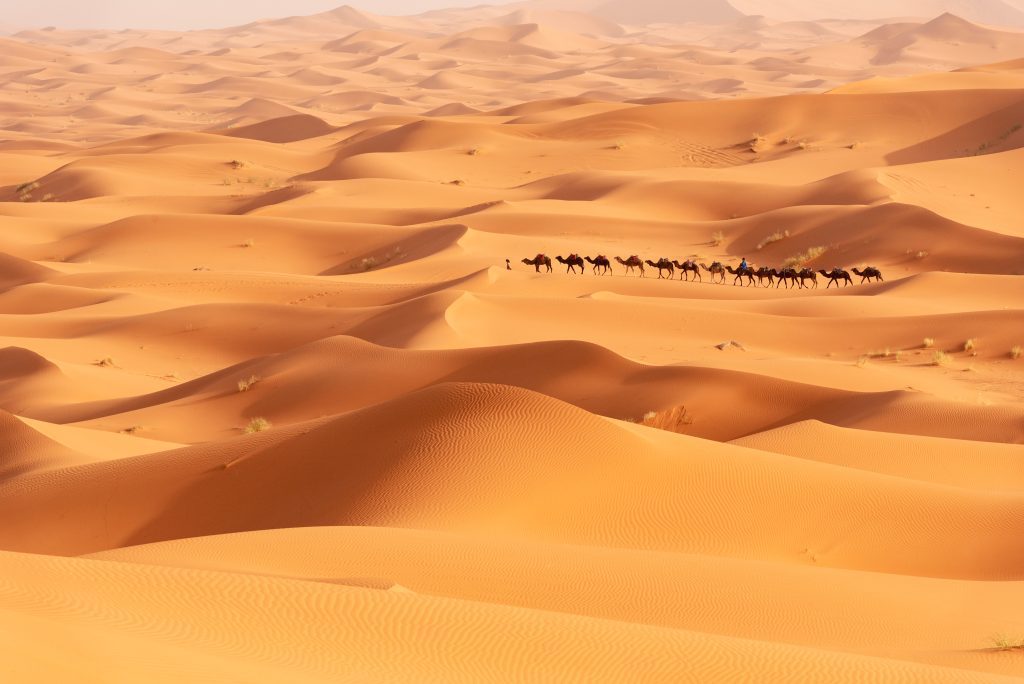
Climate and Weather Patterns of the Sahara
The Sahara Desert, known for its extreme climate, exhibits fascinating weather patterns. This section delves into the unique climatic features that define this vast desert landscape.
- Extreme Temperatures: The Sahara is characterized by some of the most extreme temperature variations on Earth, with scorching daytime heat and significantly cooler nights.
- Low Rainfall: One of the Sahara"s defining features is its minimal rainfall, making it one of the driest regions in the world.
- Seasonal Variations: While generally arid, the Sahara does experience slight seasonal changes, with marginally more rainfall in the northern and southern edges of the desert.
- Wind Patterns: The Sahara is known for its powerful wind patterns, including the hot, dry Sirocco winds that can carry sand far beyond the desert"s borders.
- Sandstorms and Dust Storms: Frequent sandstorms and dust storms, known as haboobs, can dramatically change the landscape and are a significant feature of the Sahara"s climate.
- Microclimates: Despite its overall aridity, the Sahara contains various microclimates, with some regions supporting sparse vegetation and wildlife.
The Sahara Desert"s climate and weather patterns not only shape its physical landscape but also influence the living conditions and adaptations of its inhabitants.
Unique Phenomena: Singing Sand Dunes
One of the most mesmerizing and lesser-known phenomena of the Sahara Desert is the "singing" or "booming" sand dunes. This section explores the intriguing natural spectacle of these auditory dunes.
- Musical Dunes: In certain conditions, the sand dunes in the Sahara can produce low-frequency rumbling sounds, akin to a musical note, which can be heard for miles.
- Causes of the Phenomenon: This sound is believed to be caused by the movement of dry sand grains in the dunes, creating vibrations that resonate to produce the "singing" effect.
- Factors Influencing the Sound: Factors like sand grain size, humidity, and the steepness of dune slopes contribute to the occurrence and intensity of these sounds.
- Scientific Interest: This phenomenon has attracted interest from scientists around the world, leading to various studies and research to understand its underlying mechanisms.
- Cultural and Mythical Significance: The singing dunes have also been a source of inspiration and mystique in local cultures and folklore, often featured in myths and legends.
- Popular with Tourists: These unique dunes are a popular attraction for tourists, offering a surreal experience amidst the vast desert landscape.
The singing sand dunes of the Sahara are not only a natural marvel but also a symbol of the desert"s enigmatic beauty and mystery.

READ MORE:
Conservation Efforts: Protecting the Desert"s Fragile Ecosystem
The Sahara Desert, despite its harsh conditions, is a delicate ecosystem that requires concerted efforts to preserve its unique biodiversity and natural beauty. This section highlights the ongoing conservation efforts aimed at protecting this vital environment.
- Biodiversity Protection: Initiatives are in place to protect the Sahara"s diverse species, including endangered animals like the Saharan cheetah, addax antelope, and various reptile species.
- Combating Desertification: Efforts to combat desertification include reforestation projects, sustainable land management practices, and the establishment of protected areas.
- Water Resource Management: Sustainable management of water resources is critical in the Sahara, involving the development of technologies for efficient water use and conservation.
- Climate Change Research: Research into the impacts of climate change on the Sahara is vital for developing strategies to mitigate its effects on the desert ecosystem.
- Cultural Preservation: Alongside environmental efforts, there is a focus on preserving the rich cultural heritage and traditional knowledge of the indigenous communities of the Sahara.
- Eco-Tourism Development: Promoting eco-tourism is seen as a way to raise awareness about the Sahara"s ecosystem while providing sustainable economic opportunities for local communities.
Through these conservation efforts, there is a growing recognition of the need to maintain the ecological balance of the Sahara Desert for future generations.
In exploring the Sahara Desert"s secrets, we unveil a world rich in history, diversity, and resilience. This majestic desert continues to fascinate, reminding us of the endless wonders our planet holds.


